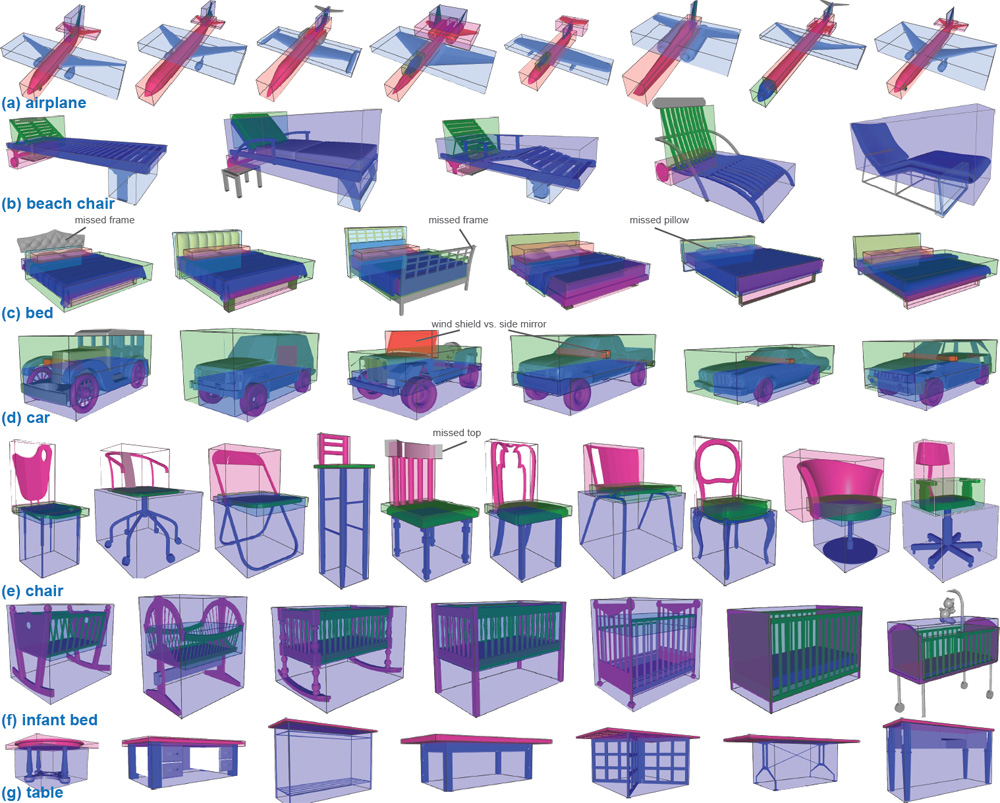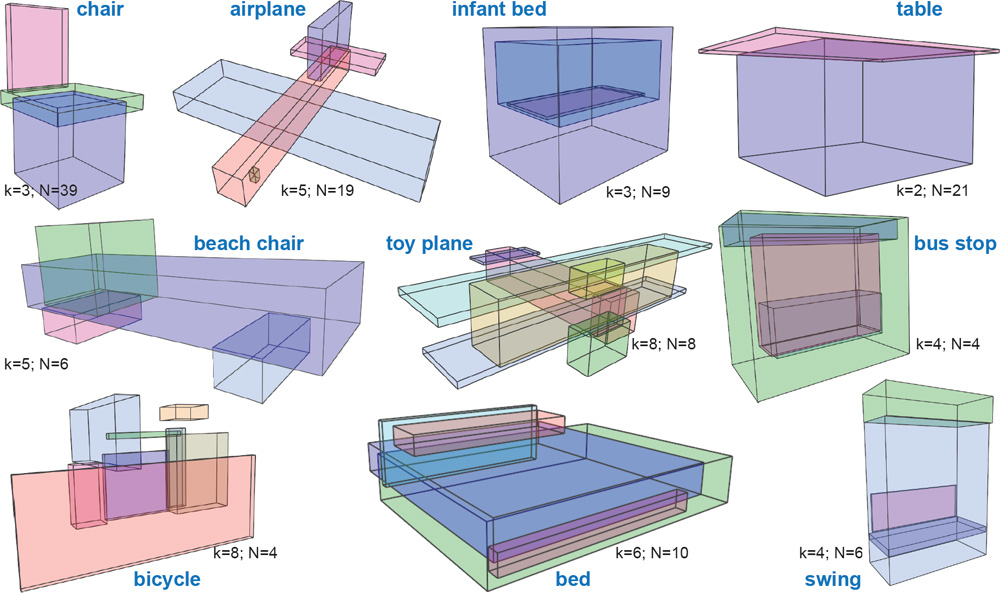

Abstract:
... that form ever follows function. This is the law.
— L. Sullivan (1896)
Extracting semantically related parts across models remains challenging, especially without supervision. The common approach is to co-analyze a model collection, while assuming the existence of descriptive geometric features that can directly identify related parts. In the presence of large shape variations, common geometric features, however, are no longer sufficiently descriptive. In this paper, we explore an indirect top-down approach, where instead of part geometry, part arrangements extracted from each model are compared. The key observation is that while a direct comparison of part geometry can be ambiguous, part arrangements, being higher level structures, remain consistent, and hence can be used to discover latent commonalities among semantically related shapes. We show that our indirect analysis leads to the detection of recurring arrangements of parts, which are otherwise difficult to discover in a direct unsupervised setting. We evaluate our algorithm on ground truth datasets and report advantages over geometric similarity-based bottom-up co-segmentation algorithms.
Results:



Video:
Code, data, etc.:
Please refer to page.
Acknowledgements:
Bibtex:
@article{zcam_partArrangement_eg14,
AUTHOR = "Youyi Zheng and Daniel Cohen-Or and Melinos Averkiou and Niloy J. Mitra",
TITLE = "Recurring Part Arrangements in Shape Collections",
JOURNAL = "Computer Graphics Forum (Special issue of Eurographics 2014)",
YEAR = "2014",
numpages = {10},
}
|
|